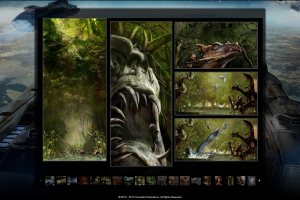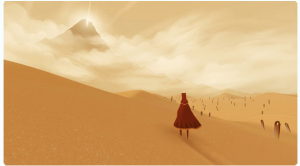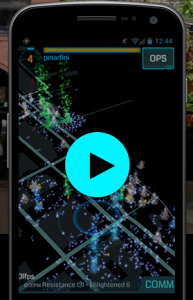Spine – kollision
Spine consists of 20 suspended glowing cubes which suggest the spinal column of some gargantuan beast stretching the length of a warehouse. The spine’s movements, the light intensity, and the sound emitted from it are all reacting to the approach of people in the hall. This project strikes me as interesting because of the inherent conflict in its existence. On one hand because of its scale and control of the only significant lighting in the warehouse, Spine necessarily dominates the space in which it has been constructed. At the same time, its nature as a reactive, interactive piece is dependent enormously on the presence of other actors. Too often we are used to monolithic elements in our world that do not reference their surroundings; Spine is a welcome contrast. I do feel that the project could become even more powerful in this respect if it were freed from the constraints of the warehouse it was installed in. Even more so if it were capable of moving itself.
cyberflora – Jeff Lieberman
cyberflora is a garden of robotic plants which react in various ways to the people observing them. Each plant has a different personality, which creates a great deal of complexity in the installation as a whole. By presenting dozens of plants which behave differently, Lieberman produces a far more compelling work than if the responses were more uniform or the plants had consistent appearance. The multiplicity of them reinforces their lifelikeness, because life is itself incredibly diverse and any simulation which ignores this loses a lot of fidelity as a rseult. The plants could stand to be more reactive to each other, as it seems that would be the next hurdle to become more lifelike.
The Heart Chamber Orchestra – TERMINALBEACH
The Heart Chamber Orchestra dynamically composes a score based upon the heartbeats of the musicians who are playing it. This project stands out in my mind because both the inputs and the perceived outputs (from the point of view of the audience) are real humans. If the visualizer screen were not displayed (and it does seem to be a rather weak element), to a layman, there would be no indication that the performance was being driven by a computer, and yet that is the only way such a performance is possible.
This project also opens up interesting question about creating feedback in the system. Would it be possible to “prime” the beginning of the piece to cause the musicians to become overly excited, or tired, thereby influencing the character of the rest of the piece? What about the possibility of drawing such signals from the audience rather than the performers, and how does that influence the character of the music?




